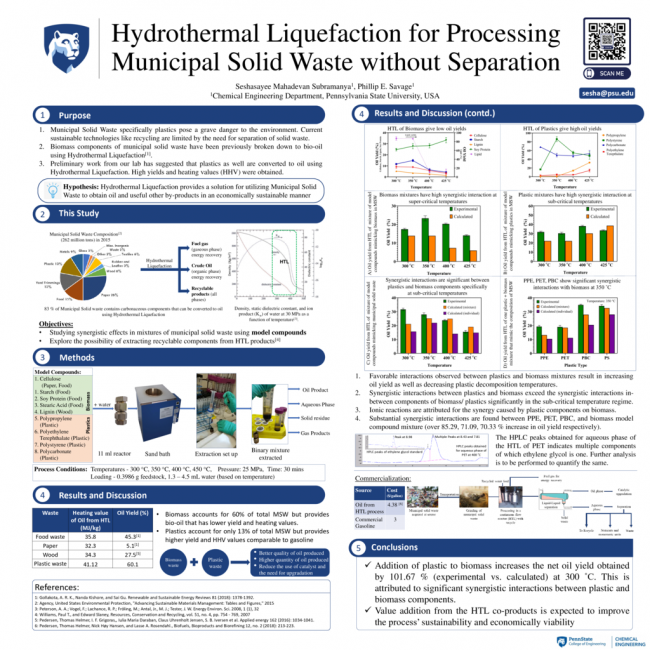Hydrothermal liquefaction (HTL) breaks down municipal solid waste (MSW) into useful components. Organic carbonaceous wastes such as food waste and wood are broken down to organic, aqueous, solid, and gaseous phases under subcritical conditions (280-374˚C). Nitrogen and Phosphorous compounds enriched in the aqueous phase can be utilized as nutrients for fertilizers. The organic phase derived from the process serves as bio-oil.
Synthetic carbonaceous wastes such as plastic depolymerize under supercritical conditions (374-500˚C). In our studies, we observed high oil yields for plastic (91% oil yield for polystyrene at 400˚C). The oil quality produced from the process is comparable to commercial fuels such as gasoline. The solid and aqueous products obtained contain monomeric units of plastics that could be recycled.
Hence, Hydrothermal Liquefaction offers a platform to utilize most components of municipal solid waste to obtain useful products while bypassing the need for separation. In the following study, we perform co-liquefaction experiments using model compounds that mimic the components of MSW. Nine model compounds, including five organic biomolecules and four plastics, were used for these experiments. Preliminary results suggest synergistic behavior between the various components. The crude oil yield between experimentally observed and theoretically calculated increases by 7 %. The decomposition of the plastics is also observed to happen at lower temperatures due to the addition of organic model compounds.
Day
Tuesday Poster Session
Related Conference Themes
Food
Materials & Waste


